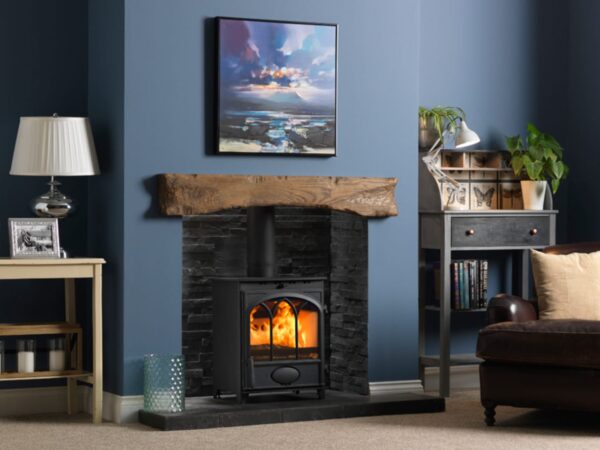
A wood-burning fireplace is always the most effective and attractive solution for enjoying a pleasant environment and, above all, at a reasonable temperature during the colder months.
Wood-burning fireplaces have accompanied humans for most of their evolution, allowing us to enjoy a much more optimal, safe and efficient system today.
More and more people are choosing this heating system, which not only allows the temperature to rise during the winter months but also adapts to the decorative style while providing a much warmer environment.
As we can see, wood-burning fireplaces are not only meant to generate heat. They are a fantastic alternative that encourages families to gather around them, creating a pleasant feeling that only wood-burning fireplaces can offer to everyone who stays.
For it to be of good quality, regardless of the type, it is essential to follow the drying process with all kinds of moisture and, thereby, its best combustion potential. If you want to get enough firewood, recommended buying logs in the supermarket logs.
Types of a wood burning fireplace
Mainly we will find three types of wood-burning fireplaces, namely:
1. Open the wood-fired fireplace
We will start with the most traditional and famous type of wood-burn wood-burning, which is none other than the open wood-burning fireplace.
Open wood-burning fireplaces were installed in homes in the past and are still used frequently today.
Its main feature is that the fireplace opens completely, meaning no type of door or element between the room and the kiln occurs.
This type of fireplace is more welcoming, as it allows you to enjoy the heat and aroma of the wood and even listen to the crackle during burning, which can be very relaxing.
There are different models on the market with other characteristics, including those designed to give a more classic and traditional touch, to others with a modern twist and perfectly adapted to the latest decorative styles.
The advantage of this type of fireplace is its convenience, as there is no need to open or close the door to keep the wood burning, to which we must add another significant benefit, namely the fact that we will be able to cook on a simple grill, clay or iron pot and cast iron skillet.
However, it should also be noted that it has some drawbacks compared to the other two alternatives, such as the fact that smoke escapes more easily into the room if it is not well drafted, in addition to the fact that lower efficiencies are achieved at heating rates, and firewood is consumed considerably.
2. Enclosed space wood-burning fireplace
Enclosed chamber wood-burning fireplaces are an evolution of the former, and they are essentially the same type of fireplace but with a closed door separating the room from where the burning takes place.
It represents significant advances, such as the fact that gas can be retained longer, which means the combustion will be slower, we will use less firewood, and at the same time, we will make more use of the heat it produces. , without forgetting that gas is prevented from entering the room, avoiding smoke and unpleasant odours.
On the other hand, you continue to enjoy the excellent convenience because to control the burning or add more wood, we need to open the door, and it will also serve us to cook if we want.
For this type of fireplace, we find more varieties with very varied shapes thanks to the fact that the combustion chamber is closed, so it doesn’t have to have a defined shape as in the open case because the gas will be forced to go through where it is possible for it.
It means we can find square and round fireplaces, to be placed in the centre of the room, inside the built-in fireplace, outside of it and just about any other alternative we can imagine.
In short, it is one of the most attractive solutions to enjoy all the advantages of a traditional wood-fired fireplace but with a better adaptation for decoration and choice of venue for its location.
3. Double chamber wood-burning fireplace
Lastly, there is the dual chamber fireplace, designed for dual combustion.
The wood is fed into the first chamber, where the first combustion takes place, which causes gas to enter the second chamber, where the second combustion is produced, burning the residue of the first.
It has several significant advantages, such as the fact that, by carrying out the second combustion, the temperature is increased more efficiently.
This way, you substantially reduce your wood consumption and drastically reduce the amount of waste generated as even the gases from this second combustion are used; in short, it’s a more innovative and complete system.
With it, you can enjoy the highest operating quality with minimum consumption and minimum generation of harmful gases, making it a more ecological system.
